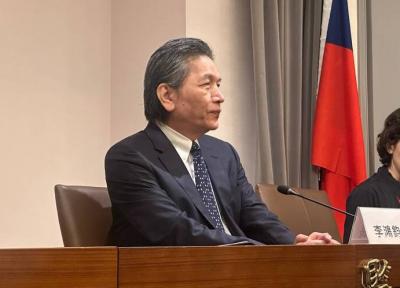The Taiwan-US Defense Business Forum in Kaohsiung, attended by business representatives and former government officials, has opened the door for Taiwan to enter the global defense supply chain.
The meeting on Thursday was part of the annual US-Taiwan Defense Industry Conference, but it was the first time Taiwan had hosted such an event.
Defense corporations represented in the forum included Lockheed Martin and BAE Systems, while a former commander of the US Army Pacific, retired lieutenant general Francis Wiercinski, represented US-based Cubic Corp.
Most of the Taiwanese corporate representatives expressed confidence in their companies’ technical capabilities, a view echoed by their US counterparts’ appraisal of local enterprises.
However, the forum also made it abundantly clear that the government has an indispensable role in ensuring the sector’s future. No other entity appears capable of facilitating the integration of defense industries and guiding the sector’s growth, let alone pushing passage of a national defense industry revival bill.
In the 1990s, the nation built Cheng Gong-class frigates and Aerospace Industrial Development Corp (AIDC) built F-CK-1 jets, while the Chungshan Institute of Science and Technology directed upgrades to the Tien Kung and Hsiung Feng missiles.
However, those hard-won defense industry capabilities were dissipated by shifts in the international political situation and the nation’s defense budget priorities over the following years.
President Tsai Ing-wen’s (蔡英文) administration should, in implementing its defense industry self-sufficiency platform, pay close attention to the global division of labor and to the nation’s reliance on foreign sources for crucial technologies.
To address those issues, the government has to inventory the capabilities of the local defense industry and communicate its demands to the US about obtaining needed technologies.
To that end, establishing unofficial channels of communication through private-sector actors would bypass political minefields, provide an opportunity to nudge the private sector toward upgrading its technologies and obtain arms for the military.
The efficient integration of resources and leading companies in investing in technology are among the greatest challenges the government will have to confront.
While the nation’s manufacturers are confident about their technological capabilities and the quality of their products, they admit they lack the certification essential for collaborating with foreign industries.
The defense industry’s supply chain has also not been systematically integrated, they said.
There are other questions for the government to ponder, such as whether it is worth relying on Taiwan-US private-sector dialogue to create a stable platform for exchange that would allow the nation’s defense industry to keep pace with international trends.
Another issue is that the government might have to select or create an entity to oversee the integration of resources and production capacities for the ship-building program.
It also appears that a streamlined system for bringing together the products and capacities of the national defense industries would be needed.
While the text of the draft act to revive national defense industries was completed last year, the Legislative Yuan has yet to review it.
As lawmakers finalize the proposals covering military pension reforms, they should make the defense industry revival bill a high priority.
After all, the Chinese government, rather than standing idle, has sought to boost its defense industries and military power.
The urgent threat China poses to Taiwan has made the revitalization of the domestic defense industry a priority of the highest order.
Translated by staff writer Jonathan Chin

Taipei has once again made it to the top 100 in Oxford Economics’ Global Cities Index 2025 report, moving up five places from last year to 60. The annual index, which was published last month, evaluated 1,000 of the most populated metropolises based on five indices — economics, human capital, quality of life, environment and governance. New York maintained its top spot this year, placing first in the economics index thanks to the strength of its vibrant financial industry and economic stability. Taipei ranked 263rd in economics, 44th in human capital, 15th in quality of life, 284th for environment and 75th in governance,

The Sports Administration yesterday demanded an apology from the national table tennis association for barring 17-year-old Yeh Yi-tian (葉伊恬) from competing in the upcoming World Table Tennis (WTT) United States Smash tournament in Las Vegas this July. The sports agency said in a statement that the Chinese Taipei Table Tennis Association (CTTTA) must explain to the public why it withdrew Yeh from the WTT tournament in Las Vegas. The sports agency said it contacted the association to express its disapproval of the decision-making process after receiving a complaint from Yeh’s coach, Chuang

Control Yuan Secretary-General Lee Chun-yi (李俊俋) tendered his resignation last night, admitting that he had misused a government vehicle, as reported by media. His resignation was immediately accepted by the Control Yuan. In a statement explaining why he had resigned, Lee apologized for using a Control Yuan vehicle to transport his dog to a pet grooming salon on May 20. The issue first came to light late last month, when TVBS News reported that Lee had instructed his driver to take the dog to the salon. The news channel broadcast photos that it said were taken by an unnamed whistle-blower, which purportedly showed the

Democratic Progressive Party caucus chief executive Rosalia Wu, front, grabs the pennant in a dragon boat race hosted by Qu Yuan Temple in the Shuanghsi River in Taipei’s Beitou District yesterday.